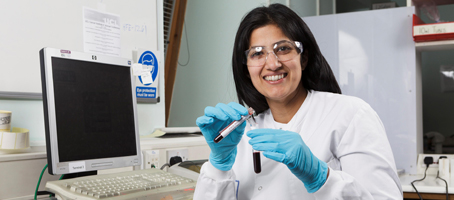With the help of our colleagues at Be The Match in the U.S., here’s the latest news from the world of stem cell transplant research.
Relaxation techniques could improve psychological wellbeing after a stem cell transplant
Many people use complementary therapies such as acupuncture, massage therapy and meditation after a transplant, but it’s difficult for doctors to know what to recommend. That’s because there isn’t much research to show whether they work or are safe to use.
New research has found that using relaxation techniques, such as breathing exercises and guided imagery, could improve quality of life.
The researchers looked at all the high-quality evidence surrounding the use of complementary therapies and alternative medicine after a transplant. They found that most therapies had mixed results – some therapies didn’t appear to have an effect and some could even cause undesirable side effects.
People who used relaxation techniques, however, appeared to have lower levels of anxiety, depression, fatigue and pain. When combined with exercise, the same techniques also appeared to improve their physical health.
Read more here.
New evidence supports the use of the HCT-CI tool to predict who will benefit from a transplant
Ten years ago, researchers developed a tool to help doctors predict who could benefit from a stem cell transplant. Since then, evidence has been mounting for its widespread use, including evidence from a large-scale study just completed in the United States.
The tool, known as the hematopoietic cell transplantation-comorbidity index (HCT-CI) looks at the overall health of the patient before a transplant. It includes health problems other than the patient’s primary illness, such as heart and lung problems.

Researchers looked at the health of almost 20,000 people who had a transplant between 2007 and 2009 in the U.S. They then compared information about their health before their transplant with how they got on over the next ten years. They found that by looking at the patient’s health overall, the tool could predict how likely the transplant was to be successful.
The researchers recommended that the tool be used by doctors to help patients decide whether a transplant is a good option for them.
Read more here.
Stem cell transplants for people with Fanconi anaemia are improving
In a study of 130 people who’ve had a transplant to treat Fanconi anaemia, researchers have seen that transplants have become more successful over the last ten years – patients are more likely to survive and have fewer side effects.
They also found that after adding a chemotherapy drug called fludarabine to the conditioning therapy (the treatment used to prepare a patient’s body for the transplant), the donated cells were more likely to take.
At the same time, other researchers around the world have also found improvements with the use of fludarabine.
The authors of the study concluded that most patients who haven’t had opportunistic infections or blood transfusions in the past can be cured of bone marrow failure after a transplant. This is the case even for people who don’t have a perfectly matched sibling donor, and instead received cells from cord blood, part-matched relatives, or matched unrelated donors.
Read more here.
Read updates on all the latest research in stem cell and bone marrow transplants from Be The Match
